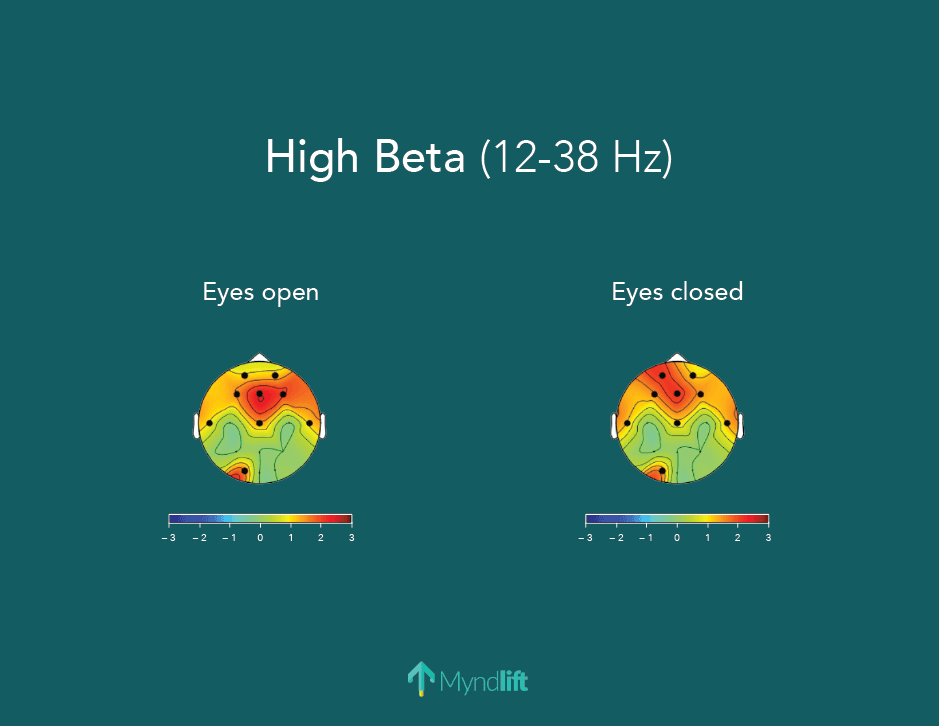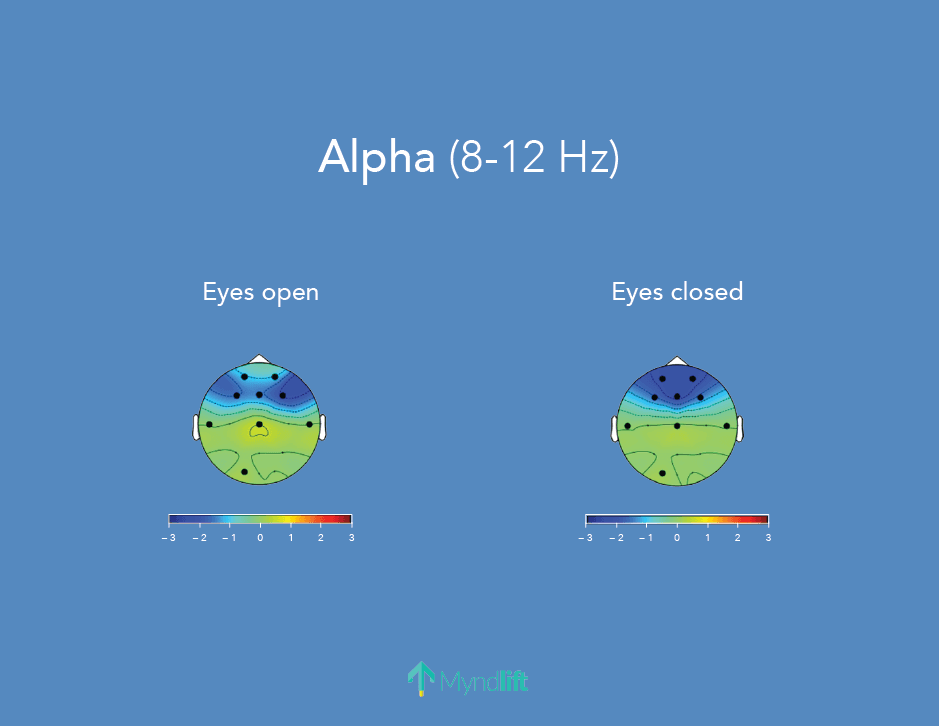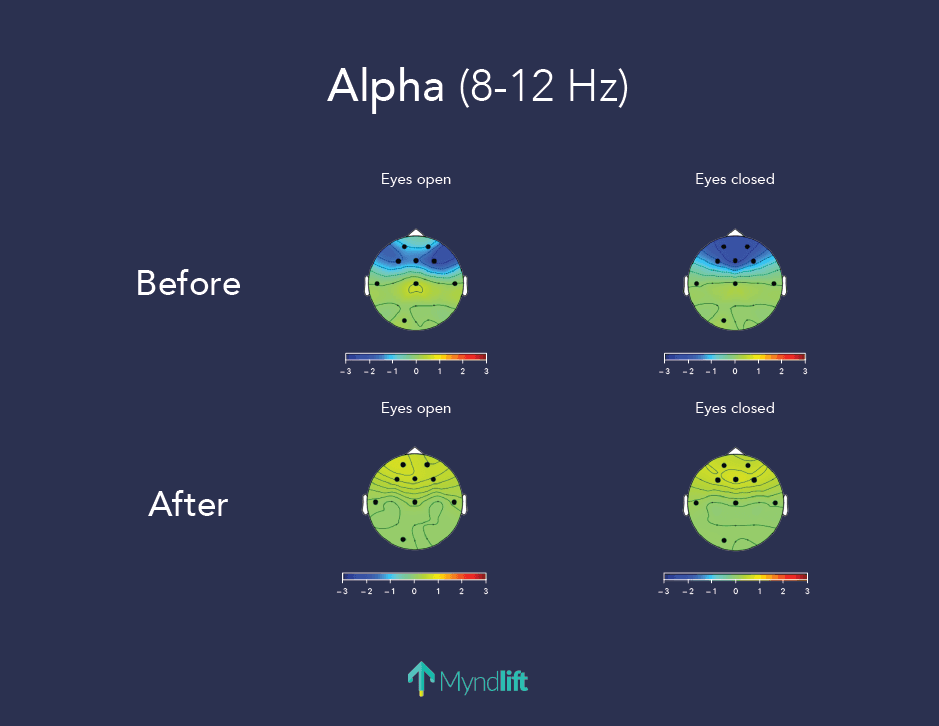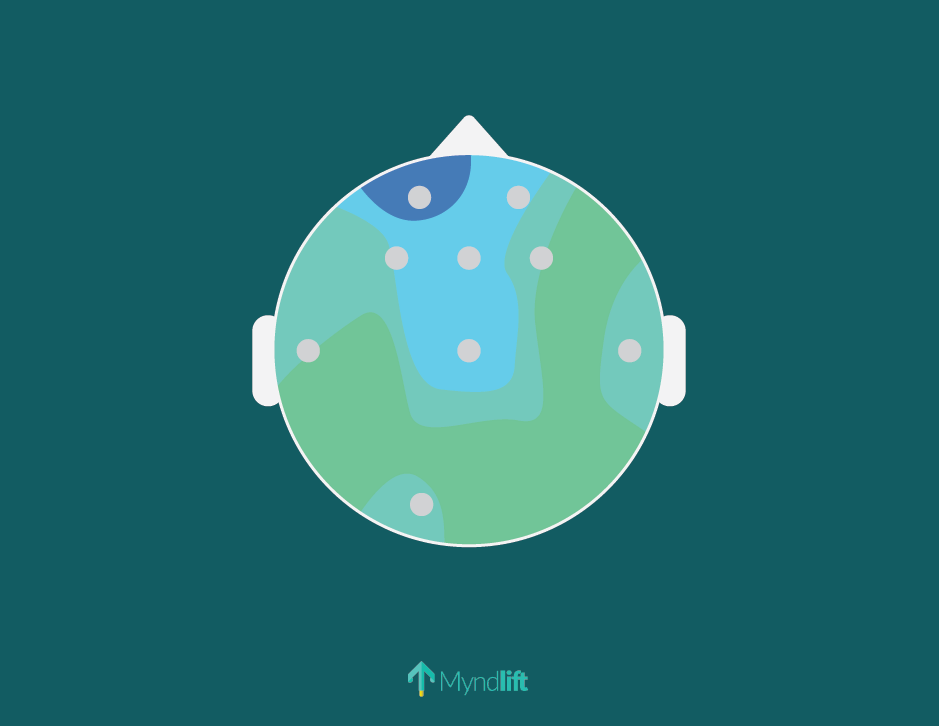The total number of neural connections in the brain is 1, followed by 12 zeros, a number as large as the number of stars in our galaxy. The human brain is indeed the single most complex thing in the known universe.
However, this complexity is not without order. In fact, it can be captured, labeled, and quantified with qEEG brain mapping. Quantitative electroencephalography, or qEEG, is a method that measures electrical activity in the brain, compares these measurements to normative values, and creates a visual topographic map. So just like the countries and continents are represented on a geographic map, with qEEG, areas of the brain are spatially defined, and their functionality is measured so that it can be compared to normative values.
These important measurements can enable you to:
Identify the root cause of certain psychological or physiological symptoms
Create an optimal data-driven therapy plan
Measure your clients' progress with neurofeedback
In this article, we'll explain how qEEG brain mapping works, why it can be an important part of your mental health toolkit, and how it can help you transform your practice.
How Does qEEG Brain Mapping Work?
A qEEG test starts with an electroencephalogram (EEG), which measures brainwave activity through sensors placed on your client's head. These brainwave readings are sent into qEEG software, which interprets and transforms the data.
The performance patterns of a single client are compared to known brain performance markers calculated from a qEEG normative database acquired from thousands of other brains. Z-Scores are based on the EEG signal, the sensor locations, the individual's age, the individual's gender, and whether the eyes are open or closed. With this information, the Z-Score is able to provide values of 0.0 (normal), positive (above normal), and negative (below normal) scores.
For example, the qEEG report could show regions that demonstrate abnormal brainwave activity, as compared to the norm (i.e., other age-matched clients).
On a map, the isocontour lines represent increments of the standardized (Z-score) units. Black dots represent electrode localizations, which include AF7, AF8, F3, FZ, F4, CZ, TP9, TP10, and O1. The voltage is standardized relative to the mean voltage for the normative population in the same age group.

The software summarizes data into a color-coded map depicting the varied power of different frequency bands across different parts of the brain. This representation can provide insight into how your client's brain functioning differs from the sample population gathered from the Myndlift database based on their age and gender.
The color red represents a higher amplitude than the database and the color blue represents a lower amplitude than the database. Increments are standardized units with 0 indicating no difference compared to the database.
1. You Might Discover a Root Cause of Your Client's Symptoms
With brain mapping, you can offer your client extensive data-driven information on the physical structure of their brain, and this information can be quite beneficial for a variety of psychological reasons.
For instance, each lobe of the brain needs to maintain specific levels of brainwave activity in order to function optimally. After performing qEEG, you may notice that your client has low frontal alpha during eyes closed and high frontal delta during eyes closed. These findings are important because they might reveal why your client is struggling with symptoms such as hyperactivity or impulsivity.
But no matter which symptoms your client is experiencing, with qEEG brain mapping, you can get a deeper understanding of their brain's inner workings and create a beneficial therapy plan as a result.

2. You Could Create an Optimal Therapy Plan
Understanding how the brain communicates and identifying abnormalities can be extremely helpful in creating an optimal therapy plan.
For example, qEEG brain mapping findings could help you create a neurofeedback protocol that targets the specific areas of your clients' brains that are causing their symptoms.
You could also use qEEG brain mapping as a part of your psychological assessment process in order to make sure you're headed in the right direction when it comes to your therapy approach.
For instance, your client might struggle with irritability, but their qEEG brain map might also show patterns depicting an individual with depressive traits. This insight into your clients' brain functionality can lead you to a different understanding of their psychological state and help you achieve a therapy outcome that's more beneficial.
3. You Can Measure Your Clients’ Progress
Being able to see how behavioral changes are improving their brain health can be extremely valuable to your clients. For example, mapping their brain during their initial consultation and performing a follow-up qEEG after a certain period of time might increase the likelihood that your clients will stay motivated and dedicated to the therapy process.
They'll be able to visualize their brain activity, by watching how the colors of their brain map change. This can help them understand the impact that this change has on their wellbeing, and help them identify any abnormalities. Furthermore, you'll have powerful data to support your clinical work.

qEEG Brain Mapping Can Now Be Done With Myndlift!
Up until now, Myndlift has been empowering mental health professionals and individuals with neurofeedback, at-home EEG, digital holistic mental care, and CBT tools.
The newest addition to these mental health tools is qEEG brain mapping, a powerful feature that will enable you to see how spatial patterns of brainwaves can improve over time. And it's finally here!
If you're already using Myndlift to scale your practice, it's important to note that brain mapping is available for all of EEG assessments that were made using the Myndlift system, even the existing ones, and generated using the acquired client-specific EEG metrics.
And if you're new to Myndlift, welcome aboard! Schedule a demo and learn more about how adding qEEG brain mapping to your mental health toolkit and offering holistic digital care can help you achieve better outcomes with clients. We can't wait to meet you!
About the author:
Dubravka Rebic
Dubravka Rebic puts a lot of time and energy into researching and writing in order to help create awareness and positive change in the mental health space. From poring over scientific studies to reading entire books in order to write a single content piece, she puts in the hard work to ensure her content is of the highest quality and provides maximum value.
References
Whitehead JC, Neeman R, Doniger GM, Preliminary Real-World Evidence Supporting the Efficacy of a Remote Neurofeedback System in Improving Mental Health: Retrospective Single-Group Pretest-Posttest Study JMIR Form Res 2022;6(7):e35636, doi: 10.2196/35636 PMID: 35802411




